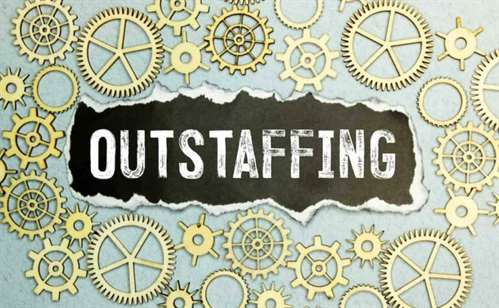The focus on people doing the work and how they work together is what separates Agile from other approaches to software development. The Agile Software allows delivering working software quickly and more frequently, allowing teams to break the lengthy requirements, build, and test phases down into smaller segments. It encourages rapid and flexible responses to change by advocating adaptive planning, early delivery, evolutionary development, and continual improvement.

This visualized structure further helps in prioritizing user stories and divide them into “must-have” and “nice-to-have” features. In pair programming, the developers work in pairs where one developer does the programming part and the other observes and then they switch their roles regularly during the sprint. This helps in continuous code review and feedback, which further helps in code quality and developer capability. This close collaboration, in turn, helps reduce technical debt, i.e., the additional cost of reworks.
You can use agile practices to improve your personal task management, optimize workplace efficiency, or align software teams around product development. The major 4 principles of agile methodology are- satisfying the customer, welcoming change, delivering frequently, and working together. Agile organizations aim to amplify the voice of the customer and use it to guide product strategy and execution throughout the development process. Another popular Agile methodology, Extreme Programming also emphasizes speed and continuous delivery.
Product Roadmaps
If the team develops excellent code in one sprint, they can continue to build off of it the next. Continually creating great work allows teams to move faster in the future. If the four values of Agile are the weight-bearing pillars of a house, then these 12 principles are the rooms you can build within that house. These principles can be easily adapted to fit the needs of your team.
- They are not prescribing their conclusions for the rest of the world.
- The idea is for your team to have a clear, unified approach for how to define and complete work — for more flexibility, faster time to market, and higher quality software.
- Adaptability and acceptance to change is a major benefit of Agile Transformation.
- As the documents were quite lengthy, it was easier to make mistakes and accidentally skip some requirements because they were lost in the burden of extra specifications.
- Typically used in software development, Extreme Programming is an Agile framework that outlines values that will allow your team to work together more effectively.
The software development process is just the set of activities that frames or transforms the vision of the software system into reality. Agile Software development process makes use of good tools and is wielded with good software craftsman who is well known to apply those at the right place and right time. These can not be utilized for the production line for manufacturing software products. Lean software development promotes a minimalist approach — eliminating waste, ensuring quality, and delivering quickly. Many growing teams rely on lean practices to help them create more functionality faster.
DSDM relies on sprints, similar to other Agile methodologies, and is often used in conjunction with approaches like Scrum and XP. The approach is similar to other Agile methodologies in its attention to early and often delivery of software, high involvement of users, and removal of red tape. Crystal’s assertion that every project is unique, however, has led to its reputation as one of the most flexible Agile methodologies. Agile methodologies are frameworks that teams and organizations use to put the Agile mindset into practice. Because we believe each team must forge their own path to agility, you won’t find highly prescriptive information on this site.
Agile development methodology: basic rules and features
During the development or during iterations there are higher chances of unknown risks they may be exposed; the agile approach is prepared to deal with these unknown risks. If there are changes in different results during the functionality, new activities or functionality can be added to reach the goal. The workflows and processes that are optimal for other groups may not be right for you.
It should also create a repeatable cycle that the team can continuously follow for as long as necessary. The Agile framework for software development processes most closely resembles XP. It strives to build high-quality software while also simplifying the entire process for the development team. XP places a high importance on feedback, communication, simplicity, bravery, and respect.
When to invest in agile workflow tools
Software development teams are known for using a wide variety of agile methodologies, approaches, and tools to bring value to customers. Depending on the needs of the team and the product’s stakeholders, it’s common for teams to deploy and utilize a combination of software development methodologies. The publication of the Agile Manifesto in 2001 marks the birth of agile as a methodology.

Kanban is another type of Agile development that uses a different approach to project management. Kanban focuses on creating a visual representation of the work that development teams must complete. One great example of this is the traditional to-do, in-progress, and done Kanban board for software projects. The Agile method outlines the best practices for organizing projects based on the four values and 12 Agile software development principles documented in the Agile Manifesto. Lean, along with the five lean principles, originally created by Toyota, is a guiding mindset that helps teams work more productively, efficiently, and effectively. It can be applied to various agile and software development methodologies.
The benefits of Agile project management
Any additional documentation, steps, processes, or work that does not add value to the customer or enhance the project outputs should be avoided or eliminated. Agile has a high level of customer involvement and includes frequent reviews of progress with both the project team and the customer. This guide will explain the Agile methodology, which projects will benefit from an Agile approach, and how to implement one effectively.

The agile process is known for its priority towards customers over process and technology. The developers evolve through adaptation and are empowered to raise their productivity and performance. These developers are very aware of dealing with the changes in the system at every stage.
Agile Characteristics
The two main things the Agile Manifesto did was to provide a set of value statements that form the foundation for Agile software development and to coin the term Agile software development itself. Agile software development is more than frameworks such as Scrum, Extreme Programming, or Feature-Driven features of agile methodology Development . Even though it is thought that daily meetings are supposed to enhance collaboration and clarify the issues, they also require time and involvement from both the customer and the team of developers. Everyone should find some time in their schedule to prepare for these meetings.
Getting started with scrum
An Agile project requires continuous contact with your stakeholders. However, some may not have the time, ability, or desire to dedicate themselves to a project. If the project is considered low value or low risk, they may prefer a more traditional approach where you only involve them at key phases or final delivery. The most efficient and effective method of conveying information to and within a development team is face-to-face conversation.
The authors of the Agile Manifesto chose “Agile” as the label for this whole idea because that word represented the adaptiveness and response to change which was so important to their approach. Instead of addressing one issue and wasting time to solve it, Lean programming suggests optimizing the work environment as a whole, which might prevent problems. Implementing changes if needed instead of sticking to the plan strictly.
Agile development method works by dividing the task into small sub-tasks termed as increments and builds the project’s ultimate deliverables in small increments by repeating basic steps over and over. It requires less planning during the development process, it mainly works for short term projects, the team efforts make a project successful. The agile development process is lightweight and provides incremental and continuous delivery. Agile development teams are working on a full-time basis and persist project to project. Teams work in time-boxed sprints of two to four weeks and each person has a clearly delineated role, such as scrum master or product owner.
The Agile Testing team members jump in at the end of every sprint cycle to identify the bugs and inconsistencies. The agile testing team conducts various types of software tests and reports the bugs back to the developers. The developers then plan and fix the code in the following sprints. This value focuses on being receptive to the customers’ demands during the Agile product development life cycle rather than creating elaborate plans right at the beginning that are dismissive of changes. Agile methodologies facilitate an evolutionary, not a revolutionary, approach, that over time can help your team or organization create more value, faster, and more reliably than ever before. One of the goals most organizations have for the implementation of any of the Agile methodologies they might select is the ability to connect and coordinate the efforts of various teams.
Agile organizations use more dynamic planning and budgeting practices to better align these practices with Lean and Agile delivery. XP is frequently recommended for small teams of experienced developers that are experienced in the XP Agile methodology and comfortable collaborating with stakeholders outside of IT. Organizations use Agile methodologies to plan work, coordinate teams, and visualize flow across teams, products, and value streams. The key to doing agile right is embracing a mindset of continuous improvement.







